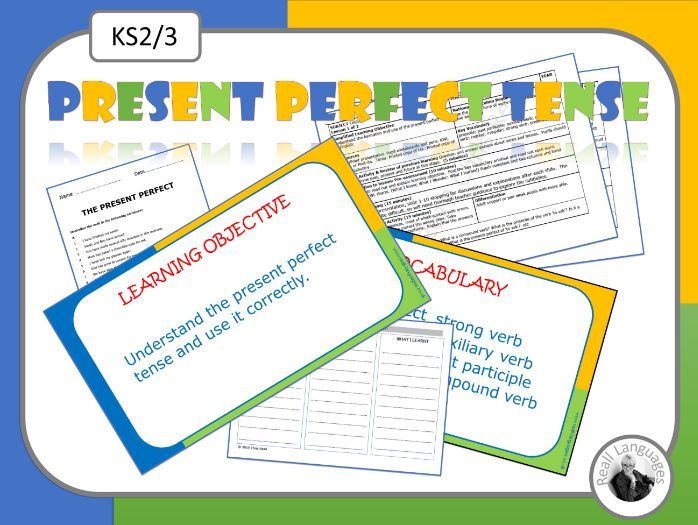








The resource addresses the Y6 NC requirement to use ‘the perfect form of verbs to mark relationships of time and cause’. It is a challenging unit of work, and would be appropriate for KS3 as well as KS2. Originally, it was written as a single lesson, but given the scope of the vocabulary and concepts covered, It is probably better to extend it over two sessions.
The colourful presentation has teacher-operated conceal/reveal animation, and ends with a paired pupil exercise to be completed in the first lesson and reviewed in the second one. There is a KWL (know/wonder/learnt) chart to encourage self-assessment by pupils and give teachers insight into achievements and difficulties. The unit ends with a pupil worksheet at two levels to allow for differentiation. Weaker pupils can be set just exercise A, where the auxiliary verb and past participle appear consecutively in the sentence, and more able ones can be set the additional challenge of exercise B, where the auxiliary and past participle are split by other elements (eg adverbs, negatives) in almost all sentences.
Two of the slides have been saved in png format so that they can be printed out for classroom display.
Something went wrong, please try again later.
This resource hasn't been reviewed yet
To ensure quality for our reviews, only customers who have purchased this resource can review it
Report this resourceto let us know if it violates our terms and conditions.
Our customer service team will review your report and will be in touch.